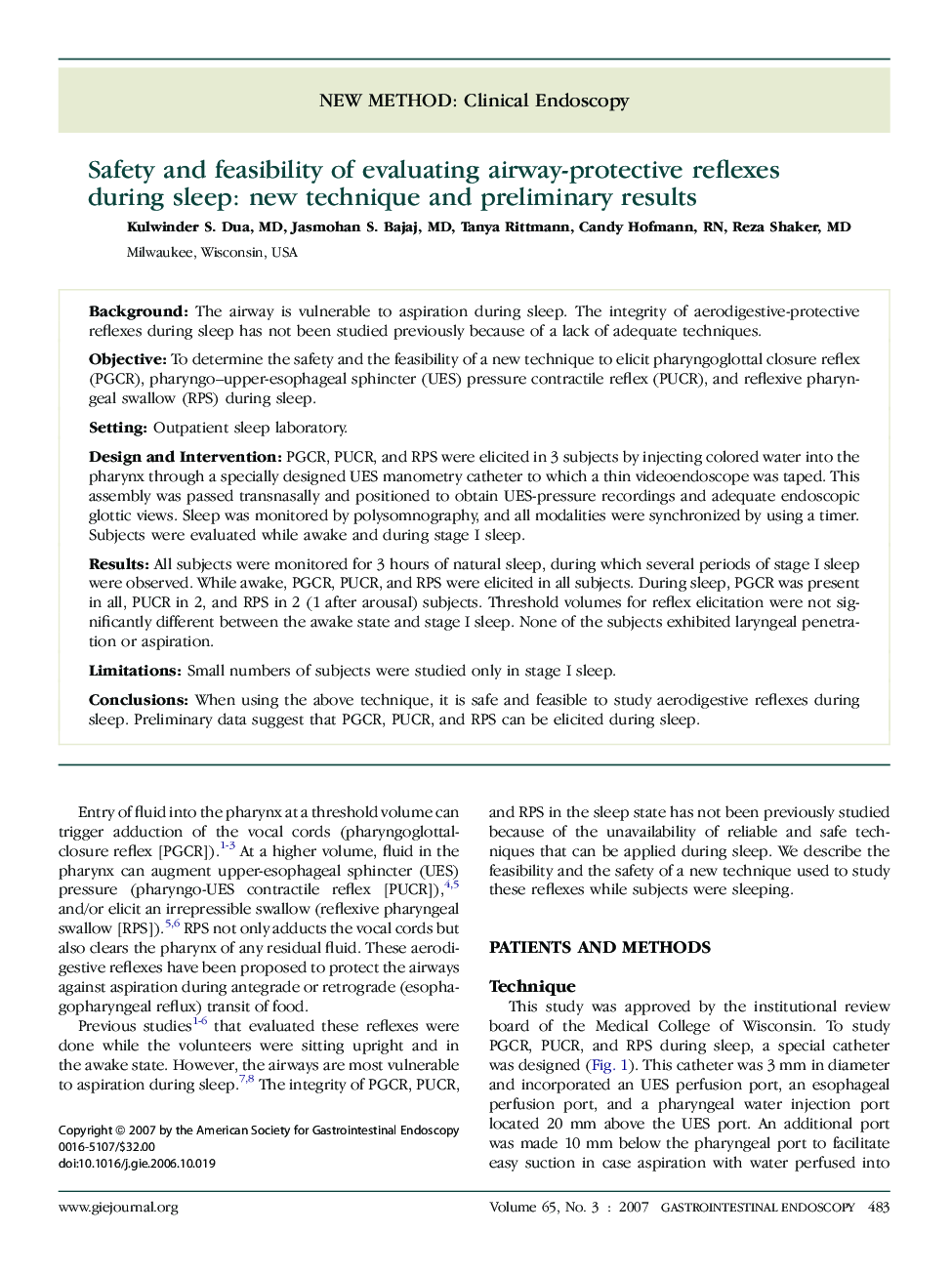| کد مقاله | کد نشریه | سال انتشار | مقاله انگلیسی | نسخه تمام متن |
|---|---|---|---|---|
| 3309369 | 1210430 | 2007 | 4 صفحه PDF | دانلود رایگان |

BackgroundThe airway is vulnerable to aspiration during sleep. The integrity of aerodigestive-protective reflexes during sleep has not been studied previously because of a lack of adequate techniques.ObjectiveTo determine the safety and the feasibility of a new technique to elicit pharyngoglottal closure reflex (PGCR), pharyngo–upper-esophageal sphincter (UES) pressure contractile reflex (PUCR), and reflexive pharyngeal swallow (RPS) during sleep.SettingOutpatient sleep laboratory.Design and InterventionPGCR, PUCR, and RPS were elicited in 3 subjects by injecting colored water into the pharynx through a specially designed UES manometry catheter to which a thin videoendoscope was taped. This assembly was passed transnasally and positioned to obtain UES-pressure recordings and adequate endoscopic glottic views. Sleep was monitored by polysomnography, and all modalities were synchronized by using a timer. Subjects were evaluated while awake and during stage I sleep.ResultsAll subjects were monitored for 3 hours of natural sleep, during which several periods of stage I sleep were observed. While awake, PGCR, PUCR, and RPS were elicited in all subjects. During sleep, PGCR was present in all, PUCR in 2, and RPS in 2 (1 after arousal) subjects. Threshold volumes for reflex elicitation were not significantly different between the awake state and stage I sleep. None of the subjects exhibited laryngeal penetration or aspiration.LimitationsSmall numbers of subjects were studied only in stage I sleep.ConclusionsWhen using the above technique, it is safe and feasible to study aerodigestive reflexes during sleep. Preliminary data suggest that PGCR, PUCR, and RPS can be elicited during sleep.
Journal: Gastrointestinal Endoscopy - Volume 65, Issue 3, March 2007, Pages 483–486